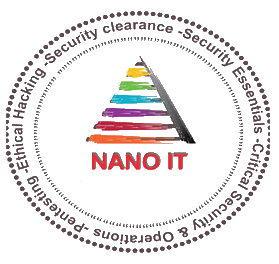Best Practice suggests that an organisation should perform regularly Web Application Pentesting in addition to regular security evaluations to ensure the security of its web applications.
And that’s because Web applications have become common targets for hackers, who can leverage relatively simple vulnerabilities to gain access to confidential information most likely containing personally identifiable information. Therefore web application pentesting can be a useful tool for gauging a Web application’s ability to withstand an attack.
While traditional firewalls and other network security controls are an important layer of any Information Security Program, they can’t defend or alert against many of the attack vectors specific to web applications. It is critical for an organisation to ensure that its web applications are not susceptible to common types of attack.
Nano IT Web Application Pentesting Objective
The primary objective for a web application pentest is to identify exploitable vulnerabilities in applications before hackers are able to discover and exploit them.
Web application penetration testing will reveal real-world opportunities for hackers to be able to compromise applications in such a way that allows for unauthorized access to sensitive data or even take-over systems for malicious/non-business purposes.
This type of assessment is an
carried out by our highly trained security consultants in an effort to:
Identify application security flaws present in the environment.
Understand the level of risk for your organization.
Help address and fix identified application flaws.
As a result of a web application pentesting, you’ll be able to view your applications through the eyes of both a hacker and an experienced IT Security Consultant to discover where you can improve your security posture. Our consultants produce findings in written reports and provide your team with the guidance necessary to effectively remediate any issues we uncover.
Nano IT's Web Application PenTesting are performed by experienced security engineers who have a vast level of knowledge and many years of experience testing online applications.
Our Approach
Nano IT ‘s web application penetration testing service utilizes a comprehensive, risk-based approach to manually identify critical application-centric vulnerabilities that exist on all in-scope applications.
Information Gathering | Threat Modeling | Vulnerability Analysis | Exploitation | Post-Exploitation | Reporting
By using this industry-standard approach, Nano IT’s comprehensive method covers the classes of vulnerabilities in the Open Web Application Security Project (OWASP) 2014 including, but not limited to: Injection, Cross-Site Scripting, Cross-Site Request Forgery, Unvalidated Redirects & Forwards, Broken Authentication & Session Management, Security Misconfiguration, Insecure Direct Object Access and more…
Methodology
Nano IT Web Application Pentesting methodology is based on the Open Web Application Security Project (OWASP) methodology which includes:
- Software Infrastructure/Design Weaknesses
- Input Validation Attacks
- Cross Site Scripting Attacks
- Script Injection Attacks (SQL Injection)
- CGI Vulnerabilities
- Password Cracking
- Cookie Theft
- User Privilege Elevation
- Web/Application Server Insecurity
- Security of Plug-In Code
- 3rd Party Software Vulnerabilities
- Database Vulnerabilities
- Privacy Exposures
Manual Testing vs Automated Testing
Nano IT Web application testing methodology is performed using the best of manual techniques and then using automated tools to ensure total application coverage. Our approach consists of about 80% manual testing and about 20% automated testing – actual results may vary slightly. The methodology allows Nano IT’s consultants be consistent in finding vulnerabilities beyond what may be found with just automated scanning tools. While automated testing enables efficiency, it is effective in providing efficiency only during the initial phases of a penetration test. At Nano IT Security, we believe that an effective and comprehensive penetration test can only be realized through rigorous manual testing techniques.
Tools
In order to perform a comprehensive real-world assessment, Nano IT Security utilizes commercial tools, internally developed tools and the same tools that hacker use on each and every assessment. Once again, our intent is to assess systems by simulating a real-world attack and we leverage the many tools at our disposal to effectively carry out that task.
Reporting
Nano IT Security strives to provide the best possible customer experience and service. Therefore we consider the reporting phase to mark the beginning of our relationship. Our report makes up only a small part of our deliverable. We provide clients with an online remediation knowledge base, dedicated remediation staff and ticketing system to close the ever important gap in the remediation process following the reporting phase.
We exist to not only find vulnerabilities, but also to fix them.
Remediation & Re-testing
Simply put, our objective is to help fix vulnerabilities, not just find them. As a result, remediation re-testing is always provided at no additional cost.

